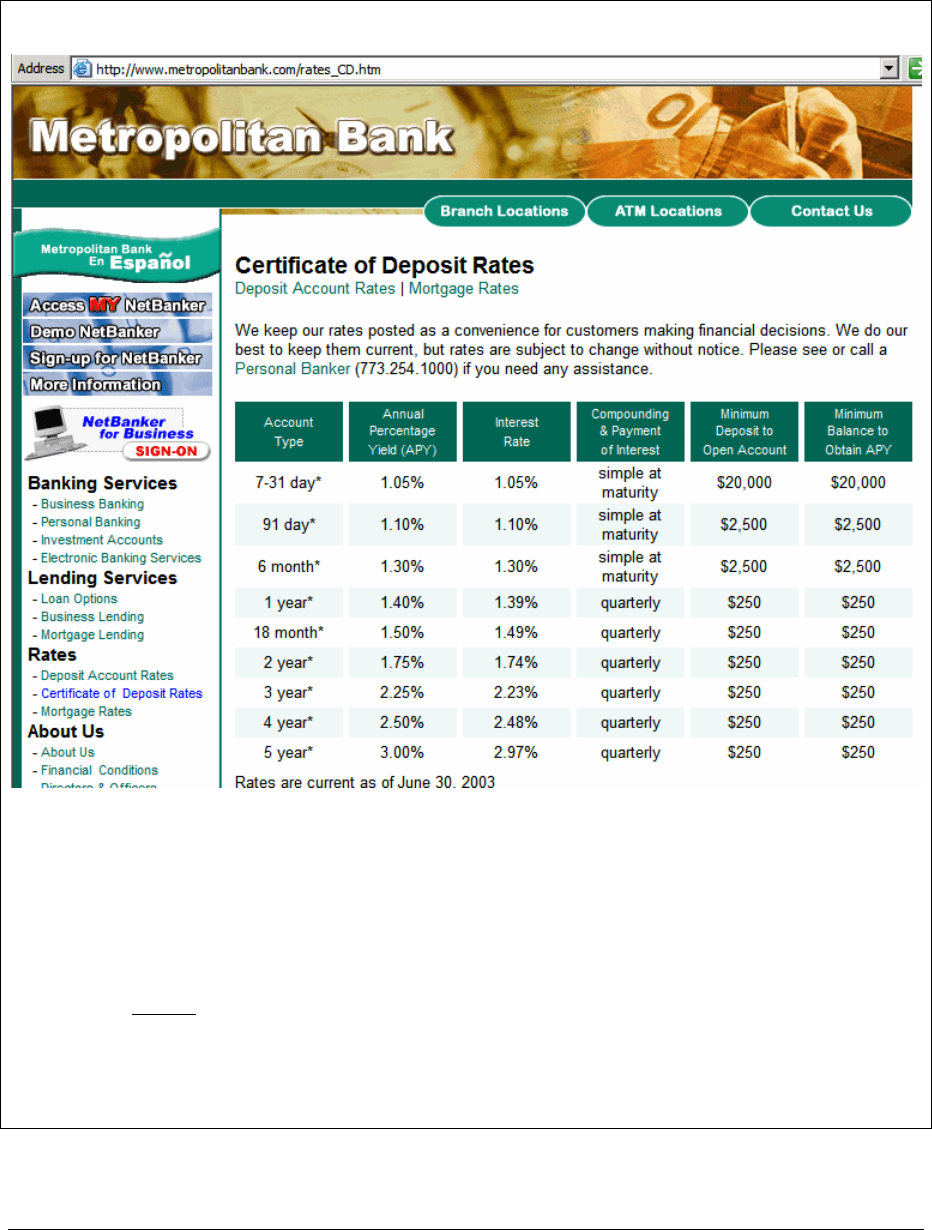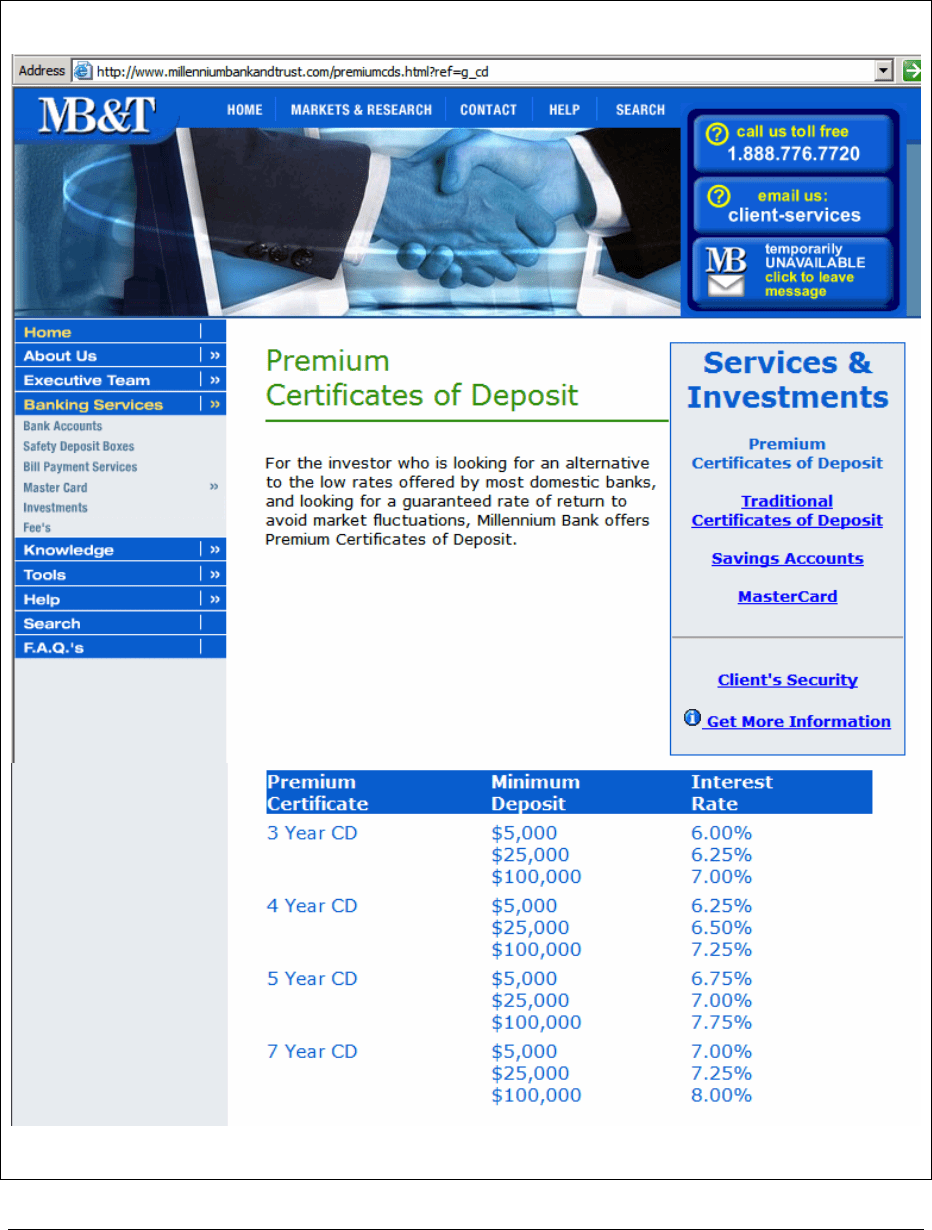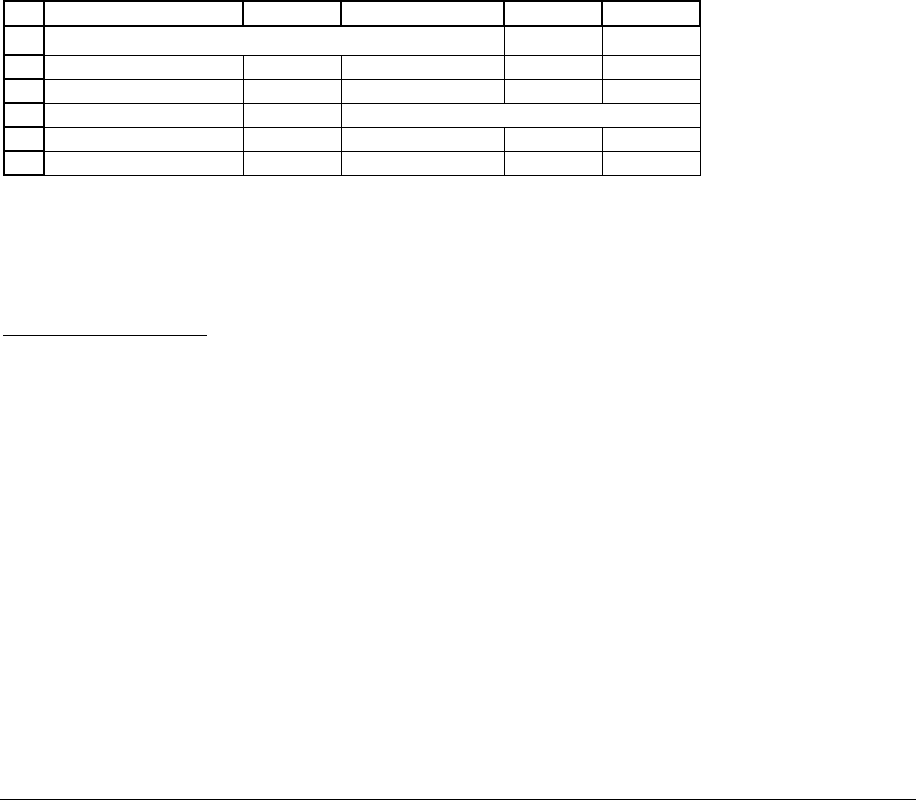Principles of Finance with Excel (Основы финансов c Excel)
Подождите немного. Документ загружается.


PFE, Chapter 10: What is risk? page 3
Finance concepts discussed
• Ex-post and ex-ante returns
• Holding-period returns
• Treasury bond returns
• Return statistics—mean, variance, and standard deviation
Excel functions used
• Month
• Sqrt
• Average
• Varp
• Frequency
10.1. The risk characteristics of financial assets—some introductory blather
In the course of your life you’ll be exposed to many financial assets. You’ve already
been exposed to them, even if you didn’t know that they were “financial assets”: When you
were small, your parents might have opened a savings account for you at the local bank, or your
grandparents bought you a few shares of stock. Now that you’re a student, you’re stuck with
2
Students reading this book will generally have had a statistics course. This chapter assumes some familiarity with
basic statistical concepts and the next chapter reviews these concepts in the context of financial assets. In this sense

PFE, Chapter 10: What is risk? page 4
student loans, and each month you’re trying to decide whether to pay off your credit card
balances or let them ride for another month and pay interest on them. Once you finish school,
you’ll be taking a car loan, buying a house and taking a mortgage, buying stocks and bonds, … .
All financial assets have different characteristics of horizon, safety, and liquidity. As you
will see, all three of these terms are in some basic sense indicative of the asset’s riskiness. In this
section we briefly review these concepts.
Horizon
Some assets are short-term and others long-term. Money deposited in a checking account
is a good example of a very short-term financial asset; the money can be withdrawn at any time.
On the other hand, many savings accounts require you to deposit the money for a given period of
time. Look at Figure 1, which shows the rates offered on certificates of deposit (CD) by
Metropolitan Bank of Chicago. A CD is a time-deposit at a bank—a deposit which cannot be
withdrawn for a certain period of time.
3
Not surprisingly, longer-term CDs offer higher interest
rates.
You’re not always “locked in” to a financial asset with a long horizon. Many long-
horizon assets can be sold in the open market. Suppose, for example, that you buy a 10-year
government bond. You can “cash out” of the bond at almost any time by selling the bond in the
open market, but selling the bond before its 10-year maturity exposes you to the riskiness of an
unknown market price. This subject is explored in detail in Section 10.2 below.
Chapters 10 and 11 are twins.
3
Most banks will allow you to withdraw your money from a CD before the horizon date, but only if you pay a
penalty.

PFE, Chapter 10: What is risk? page 5
Some assets have a long and indeterminate horizon. A share of stock in a company is a
good example. Holding a share of McDonald’s stock, for example, entitles you to whatever
dividends the company pays its shareholders for as long as you hold the stock and the company
exists. You can, of course, sell the stock in the stock market, but this exposes you to the risks of
the stock price fluctuations. In Section 10.3 below we discuss how to analyze the riskiness of
stock holding; this is a topic to which we return in much greater detail in Chapters 11 – 15.
Safety
Financial assets differ in the certainty with which you get back your money. The
Metropolitan Bank CDs in Figure 1 are guaranteed by the Federal Deposit Insurance
Corporation, an agency of the United States government, up to a limit of $100,000. Up to this
limit, the purchaser of a Metropolitan Bank CD will get his money back (including interest),
even if the Metropolitan Bank fails to meet its obligations.
CDs issued by the Millenium Bank and Trust (MB&T) of St. Vincents (a small Carribean
country) pay much higher interest rates (see Figure 2) but are not guaranteed by the U.S.
government. The return on the MB&T CDs is less certain and consequently the interest rates
offered by the bank are higher.
The issuer of a CD announces the interest rate to be paid on the CD and will, presumably,
keep this promise if possible. The same holds for a bond issues by a company or a government.
On the other hand, the issuer of a stock does not give any undertaking about either the stock’s
dividends or the market price of the stock. In this sense the safety of a stock is much less than
the safety of a CD or a bond.

PFE, Chapter 10: What is risk? page 6
In general, the less safe an asset, the greater the return investors will demand and expect
from the asset. Thus, for example, if Metropolitan Bank’s CDs pay interest of between 1% - 3%,
intelligent holders of McDonalds stock (less safe and more uncertain than a CD) should expect a
return greater than 1% - 3%.
This business of “expected return” is complicated:
• If you buy a Metropolitan Bank 5-year CD, you are promised an annual return of 3%.
You will get this annual return with absolute certainty (well, almost absolutely: There’s
always the remote possibility of a catastrophe which prevents both Metropolitan and the
U.S. government from honoring their obligations … ). For the Metropolitan Bank 5-year
CD, the expected return and the actual return received (in economists’ jargon, these are
called the ex-ante and the ex-post returns) are the same.
• If you buy a share of McDonald’s stock, you will expect to get more than 3% annual
return. However, in this case this expectation is merely an anticipated average future
return. In other words: You would be disappointed but not surprised if the actual annual
return on the stock after 5 years was less than 3%.
Liquidity
The ease with which an asset can be bought or sold is the asset’s liquidity. In general, the
more liquid an asset, the easier it is to “get rid off,” and the less its risk.
Listed stocks of major American companies have very high liquidity. For the period
1990-1999, the average daily number of McDonalds shares traded (meaning: shares bought and
sold) on the New York Stock Exchange was 1.5 million shares. This is the average; the highest
number of shares traded daily was almost 12 million and the lowest number of shares was

PFE, Chapter 10: What is risk? page 7
63,000.. If you want to buy or sell a single share of stock (or even several thousand shares),
you’ll have no trouble doing so: McDonalds stock is very liquid.
Liquidity has another aspect, which financial economists call price impact. Suppose you
decided to sell the 1,000 shares of McDonalds stock your father gave you. You’ll have no
trouble selling the stock, but will your sale affect the market price? For McDonalds stock the
answer is “no.”
Not all stocks are equally liquid: Aladdin Knowledge Systems is a small company which
trades on the Nasdaq stock exchange. On an average day around 60,000 shares of Aladdin are
bought and sold, but this number has been as low as 100 shares per day. You would have
relatively little trouble buying or selling several thousand shares of Aladdin stock, but your
action might well affect the market price of the stock. Aladdin is not nearly as liquid as
McDonalds and consequently has greater liquidity risk.
What now?
Horizon, safety, and liquidity all determine the risk of a financial asset. In the succeeding
sections we’ll give some concrete examples. We start by looking at the risks inherent in holding
a U.S. Treasury bill. A T-Bill is completely safe, in the sense that the U.S. Treasury will keep its
obligation to pay back the money borrowed. It’s also very liquid—billions of dollars of T-bills
are bought and sold every day in financial market. However, we’ll show that the horizon of a T-
bill means that it is somewhat risky—if you try to sell it before it matures, the market price is
unpredictable.
From the T-bill we move on to an analysis of the risks inherent in McDonalds stock.
McDonalds stock is not safe in the sense that the company makes no promises about either

PFE, Chapter 10: What is risk? page 8
dividends or the future market price of the stock. We’ll analyze the returns on McDonald stock
over the decade 1990-2000 and we’ll try to make some statistical sense out of these returns.

PFE, Chapter 10: What is risk? page 9
Metropolitan Bank (Chicago) Certificates of Deposit
Metropolitan Bank offers a variety of certificates of deposit (CD). CDs differ by interest
rates and by the amount of time the money is locked up. CDs with longer lock-up times offer
higher interest rates. APY is Metropolitan Bank’s terminology for the effective annual interest
rate (EAIR) discussed in Chapter 2. For example, the 5-year CD pays 2.97% quarterly. This
makes the EAIR 3.00%:
4
2.97%
1 1 3.00%
4
EAIR
=+ −=
Figure 1

PFE, Chapter 10: What is risk? page 10
Millenium Bank and Trust (St. Vincents) Certificates of Deposit
Figure 2

PFE, Chapter 10: What is risk? page 11
IS IT RISK OR UNCERTAINTY?
Frank H. Knight (1885-1972) wrote a dissertation in 1921 called Risk, Uncertainty and
Profit. Knight used risk to mean randomness with knowable probabilities and uncertainty to
mean randomness which is unmeasurable. In finance the distinction between these two concepts
is often blurred and the words “risk” and “uncertainty” are used interchangeably.
10.2. A safe security can be risky because it has a long horizon
Finance people use the words “risk-free” to describe an asset whose value in the future is
known with certainty; “riskless” is a synonym. One classic textbook example of a risk-free asset
is a bank savings account. If you deposit $100 in your bank savings account, which currently
earns 10%, then you know that one year from now there will be $110 in the account. It’s risk-
free.
A United States Treasury bill is another example of a riskless asset. Treasury bills are
short-term bonds issued by the government of the United States.
4
Unlike bank CDs, Treasury
bills do not have an explicit interest rate. Instead they are sold at a discount—a bill with a face
value of $1,000 which matures one year from now might be sold today for $950. In this case the
purchaser of the bill who holds the bill to maturity would be paid $1,000 by the U.S. Treasure
and would thus earn a rate of return of
1, 000
1 5.2632%
950
−= . Since Treasury bills are issue by
the U.S. government, at least one kind of risk—default risk—is absent from these instruments:
4
There are many different kinds of bonds. For a more complete discussion, see Chapter 000.

PFE, Chapter 10: What is risk? page 12
Since the government owns the printing machines which produce dollar bills, they can always
run off a few dollars to make good on their promises.
The purpose of this section is to point out that even Treasury bills—and other financial
instruments which are free of default risk—may have elements of
price risk.
Suppose that on 1 January 2001 you buy a one-year $1,000 U.S. Treasury bill, intending
to hold the bill until its maturity on 1 January 2002. As we said, a Treasury bill doesn’t pay any
interest; instead, it is bought at a discount—that is, for less than its face value. In the case at
hand, suppose you buy the bill for $953.04; since it matures in one year after the purchase, you
anticipated getting interest of 4.93%:
1
2
3
4
5
6
ABCDE
INTEREST ON THE TREASURY BILL
Purchase price 953.04
Payoff on maturity 1,000.00 <-- This is the Treasury bill's face value
Interest 4.93% <-- =B4/B3-1
Now before we start doing fancier calculations, let’s make one thing perfectly clear:
If
you hold the Treasury bill from 1 January 2001 until its maturity 1 year later, you will
absolutely, definitely
earn 4.93% interest. T-bills are obligations of the United States
government and it has never defaulted on them.
In finance jargon the
ex-ante return (sometimes called the anticipated or expected return)
is the return you think you’re going to get. The
ex-post return (also called the realized return) is
the actual return that you get when you sell the asset. For the Treasury bill illustrated here, the
ex-ante return equals the ex-post return
if you hold the bill until maturity. This is always true for
riskless bonds.
Out of curiosity, you track the market price of the bill on the first of each month during
the year. Here’s what you find:
